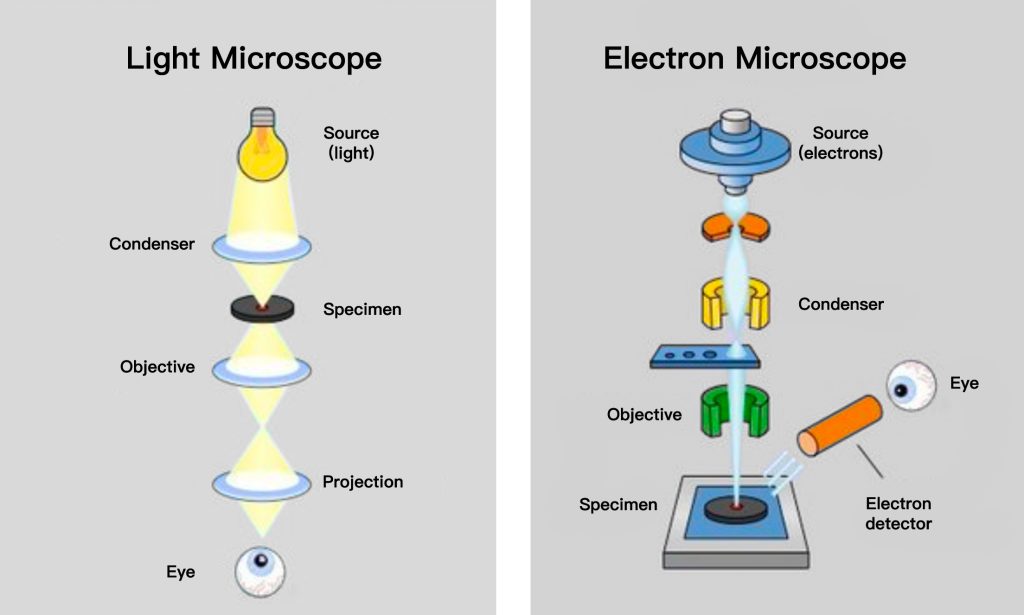Optical microscope light
Optical microscopy uses visible light, the wavelength of visible light (λ) is 400 to 700 nm. For microscopy, the resolution limit is 𝑅=0.61λ/𝑁𝐴,
(where NA is the numerical aperture, acceptable angular range and dimensionless quantification of the refractive index).
From this equation, it can be seen that the resolution is directly proportional to the wavelength. A given microscope can only image objects that are approximately 1/2 the wavelength of the light source.
The electron beam of electron microscope
Electron microscopes use electron beams, which have shorter wavelengths than visible light, so the resolution of electron microscopes is much higher than that of optical microscopes.
The resolution of the microscope is related to the incident cone angle and wavelength of the electron beam passing through the sample.
The wavelength of the electron beam is related to the accelerating voltage.
According to the principle of wave-particle duality, the wavelength of high-speed electrons is shorter than that of visible light, and the resolution of the microscope is limited by the wavelength it uses. The application of electron microscopy technology is based on the optical microscope.
The resolution of the transmission electron microscope is 0.2μm, and the resolution of the transmission electron microscope is 0.2nm, which means that the transmission electron microscope is magnified 1000 times on the basis of the optical microscope.

TEM breaks the diffraction limit of light by using a light source with a shorter wavelength than photons (electrons)! From de Broglie, we know that the wavelength of a particle can be found by: λ=ℎ/𝑝
(where ℎ is Planck’s constant, 𝑝 is the momentum of the particle, and λ is the wavelength).
In a TEM, at a given accelerating voltage (neglecting relativistic effects), the wavelength of propagating electrons is: λ=ℎ/(√2𝑚𝑒𝑉), Wavelength varies with voltage, but there is no theoretical limit.
A commonly used voltage is 100 keV, which produces a wavelength of 3.70 pm, much smaller than visible photons.
